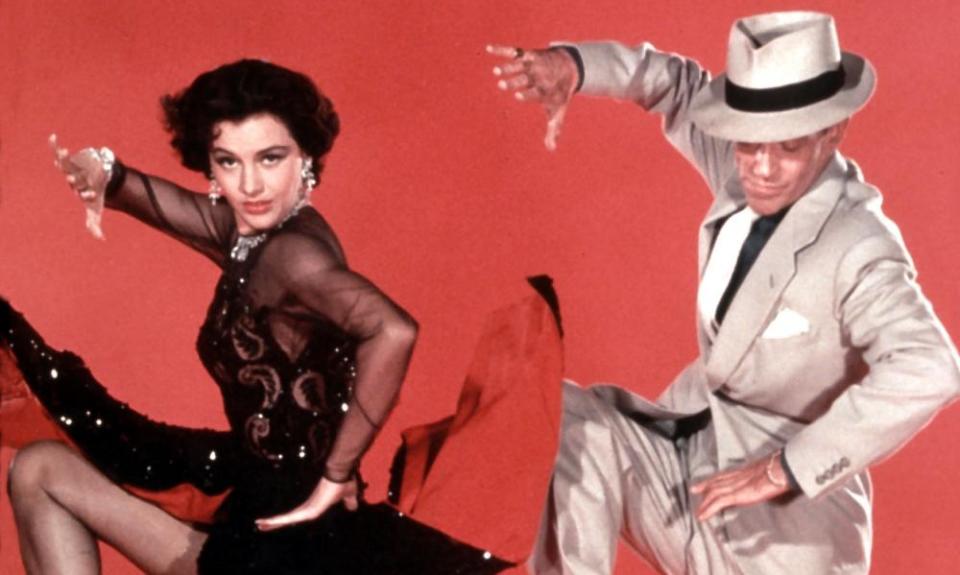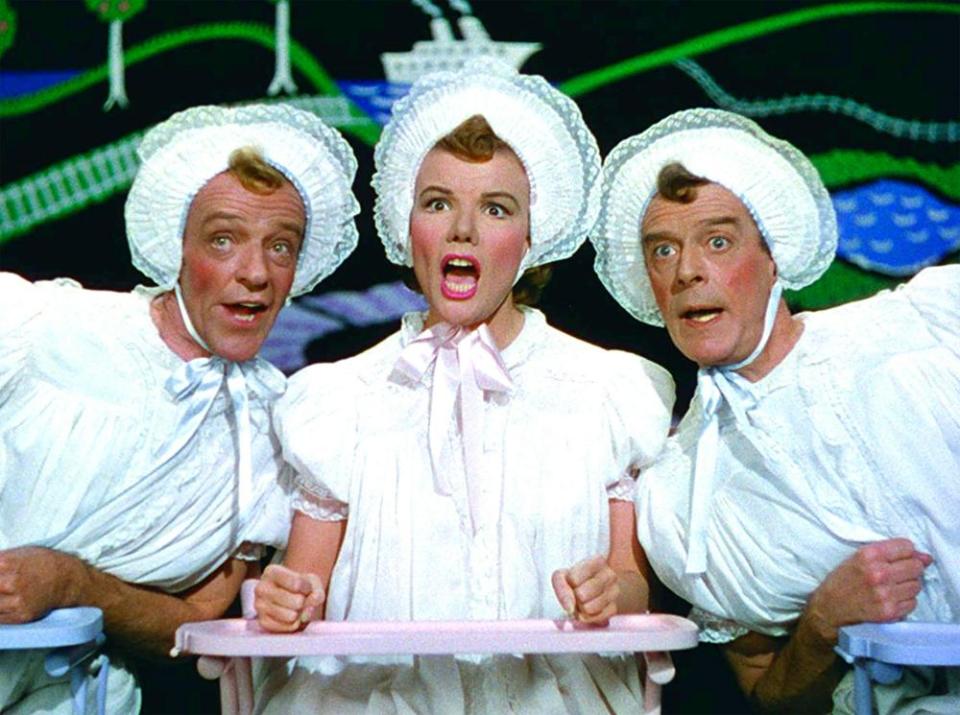The Band Wagon: Minnelli’s musical is perfect curtain-raiser to theatre’s return

Vincente Minnelli’s MGM musical The Band Wagon (1953) has terrific songs, including the celebratory That’s Entertainment!, and boasts some joyous choreography but one of my favourite scenes is downright funereal. An ashen-faced man staggers dazed from an auditorium, along with sombre ushers and horror-stricken theatregoers. They have just seen – and will never be able to unsee – the first tryout of an overblown Faust musical mangled by megalomaniac star and producer Jeffrey Cordova. The opening night party is a ghost town. Minnelli gives us a huge closeup of an egg to make it clear: this company has just laid one.
The travesty comes about because the show’s original writers, Lester and Lily Marton (Oscar Levant and Nanette Fabray), have essentially made their own Faustian pact with Cordova (Jack Buchanan) by acquiescing to his ridiculous suggestions. The duo’s original vision was a lighthearted vehicle for their pal, seasoned song-and-dance man Tony Hunter (Fred Astaire), to play a children’s author who dabbles in murder mysteries.
Cordova, fresh from hamming it up in a garish production of Oedipus Rex, spins this lightweight concoction into a heavy epic with pyrotechnics and, as one stagehand complains, “more scenery than Yellowstone national park”. We see him flamboyantly acting out a one-man version of the spectacle to a roomful of financiers – a reminder that in theatre showmanship is needed behind the scenes, too. On opening night he gives the cast a pep talk, saying that theatre is a “temple of the arts and a place of business”. Later in this series I’ll look at the Spanish film Noviembre (2003), in which a guerrilla theatre group rejects commerce; The Band Wagon considers that uneasy tension between box-office profit and artistic integrity.

Backstage musicals about the stage and screen were a popular formula by the mid-50s. The film’s writers, Betty Comden and Adolph Green, had just had a hit with Singin’ in the Rain (1952), about a disaster-hit movie at the dawn of the talkies. One of that film’s gags is that a queen of the silent screen is now required to talk and has a screechingly awful voice. Comden and Green drew on their own careers in theatre for The Band Wagon, which also explores the difficulties of adapting to different trends in entertainment, friction between different generations in the arts and the barriers between different artforms. Cordova rails against the distinction between “serious” drama and musicals – a snobbery that still exists today. But the creatives themselves are uneasy about moving beyond their specialisms and the Martons are right in their initial suspicion that Cordova can’t manage a musical. (Mind you, he can’t do tragedy either judging by Oedipus Rex.) Tony is nervous about dancing with the ballerina Gabrielle Gerard (Cyd Charisse) in the show; she is in awe of his screen career.
Some of these emotions were mirrored behind the scenes. Astaire’s daughter has said that he was apprehensive about duetting with Charisse. The film considers actors’ awareness of their own particular skillset in performance. Tony says: “I know what I can do and I’m going to stick to it.” This reminded me of what Alfred Molina recently said about actors in our Double Acts series: “We all realise, at quite an early age, the deck of cards we’ve been dealt – what you can and can’t do, physically, emotionally.”
After its disastrous first performance, closure beckons for the Faust musical but the company hatches a radical plan to ditch the usual top-down structure of a stage production, demote their director and make the show they want collectively. This liberating spirit is reflected in a subplot where Gabrielle breaks off from her partner (played by James Mitchell) who manages her career with an iron grip.
The show they end up making is a revue, with standout musical numbers such as the country-inflected Louisiana Hayride, performed by Fabray, and the ingeniously filmed (and more than a little creepy) Triplets, which has Fabray, Astaire and Buchanan done up as infants. There’s no apparent through-line to this new show, which skips between dizzily enjoyable but rather random routines. However, the film makes sophisticated use of dance to develop characterisation and move the story along – the key example being a moonlit dance in the park that sees Tony and Gabrielle fall into step (and in love) after their first frosty encounters.
Several MGM musicals of this era have at their centre a standalone dance sequence, presented as a film within the film, and choreographer Michael Kidd’s creation for The Band Wagon is a beauty. Girl Hunt Ballet, presumably riffing on the noir novels written by the Martons’ imagined children’s author, casts Astaire against type as a gumshoe encountering two mysterious ladies played by Charisse. It’s staged in a way that fuses the worlds of theatre and cinema: the laconic voiceover is pure film noir but it’s danced on a stage with theatrical sets. In a speakeasy sequence set in Dem Bones Cafe, hoods enter with stylised moves, as if missing bones themselves. Legs become weapons and Astaire’s usual easy grin fixes into a clenched jaw. Michael Jackson paid homage to the scene in the video for the song Dangerous which borrows the line “she came at me in sections”, originally used to describe the cubist pizzazz of Charisse’s angular femme fatale.
Some of the songs in the film, by Arthur Schwartz and lyricist Howard Dietz, were written 20 years earlier; Dancing in the Dark also featured in their 1931 stage revue also called The Band Wagon, starring Astaire and his sister Adele, which very loosely inspired the MGM film. These standards were supplemented by a new song, That’s Entertainment!, whose rhymes extol the thrill of stage performance whether it be the circus (“the clown with his pants falling down”) or Hamlet (“a ghost and a prince meet, and everyone ends in mincemeat”). It’s irresistible at the best of times – and, watched today, is a perfect curtain raiser as theatres prepare to welcome back audiences.
• The Band Wagon is on BFI Player

 Yahoo Finance
Yahoo Finance 